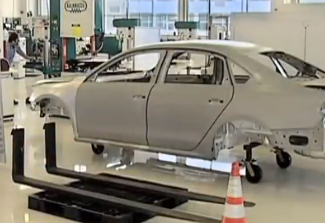Turning Apprenticeships Into Degrees
By AACC Staff
December 15, 2014
The U.S. Department of Labor recently launched a national network to help apprentices complete college degrees.
As more community colleges move toward competency-based education, they are providing college credits for prior learning and on-the-job training. Some community colleges are going a step further and working with local employers to link apprenticeships to community college degrees.
What follows is an excerpt of an article that first appeared in AACC’s Community College Daily on the federal government’s Registered Apprenticeship-College Consortium and the community colleges that are helping apprenticeship program participants earn degrees.
Community and technical colleges are working with industry to ensure that more apprentices aren’t just getting on-the-job training; they’re also getting degrees.
This idea is being promoted by the U.S. Department of Labor, which launched the Registered Apprenticeship College Consortium (RACC) earlier this year. RACC is a national network of postsecondary institutions, employers, unions and associations working to create opportunities for apprentice graduates to complete a college degree.
One of the founding colleges in the consortium is Estrella Mountain Community College (EMCC) in Arizona. EMCC partnered with Palo Verde Nuclear Generating Station (PVNGS) in 2001 to create a program that sets people on the path to an associate degree in power plant technology. The program provides PVNGS with a “more educated workforce,” said Clay Goodman, vice president of occupational education at the college.
Qualified candidates enter into a paid intern program, which is like pre-apprenticeship. Students spend time in the classroom at EMCC and time on-site at PVNGS, rotating through seven different disciplines to discover where their interests and skills lie. The nuclear plant pays the tuition for the one-year program.
When students complete the program, they can bid for an apprenticeship position in their chosen discipline.
“It’s basically a yearlong interview,” Goodman said.
It’s very competitive, too. Typically, about 100 people apply for 15 to 20 slots.
A comprehensive approach
During the internship and apprenticeship programs, students work toward completion of their degree.
The curriculum includes a career and personal development course and a test prep workshop to prepare students to take and pass pre-employment tests required by most utility companies. On the job, students log 8,000 hours before graduating. Students get preferential treatment in PVNGS’ application process, bypassing job candidates who are not in the power plant technology program.
“The leadership at the plant is very pro-education,” Goodman said. “They’re thinking about what role the employee will have 10 to 15 years in the future. Having someone with a solid education makes a better employee.”
This is especially important since about half of the people working in the nuclear industry are eligible for retirement.
Constructing a degree
In Maryland, the Community College of Baltimore County (CCBC) works with several state-registered apprenticeship programs. With its construction craft professional program, the college helps students accelerate through the degree process by offering credit for prior learning.
Students who complete a four- or five-year craft apprenticeship program in a technical area can receive six articulated credit hours for each year of the apprenticeship.
While students get on-the-job training, in the classroom they learn different methods of communication, problem solving and decision making, as well as safety and health regulations that pertain to construction.
“People used to think either you went to college or went into the trades. It’s not an either/or,” said Beth Arman, director of prior learning assessment.
CCBC has a number of industry partners, which are “tremendous resources,” Arman added. Many partners have subject-matter experts who teach courses, and help develop curriculum.
“They extend our area of expertise,” she said.
To read more about RACC and another example of the apprenticeship-degree linkage, check out the full story on AACC’s Community College Daily.








